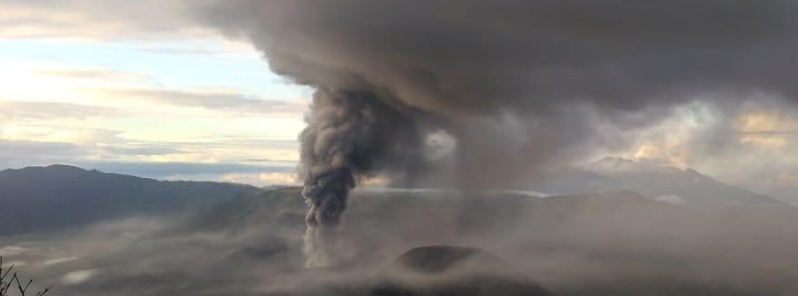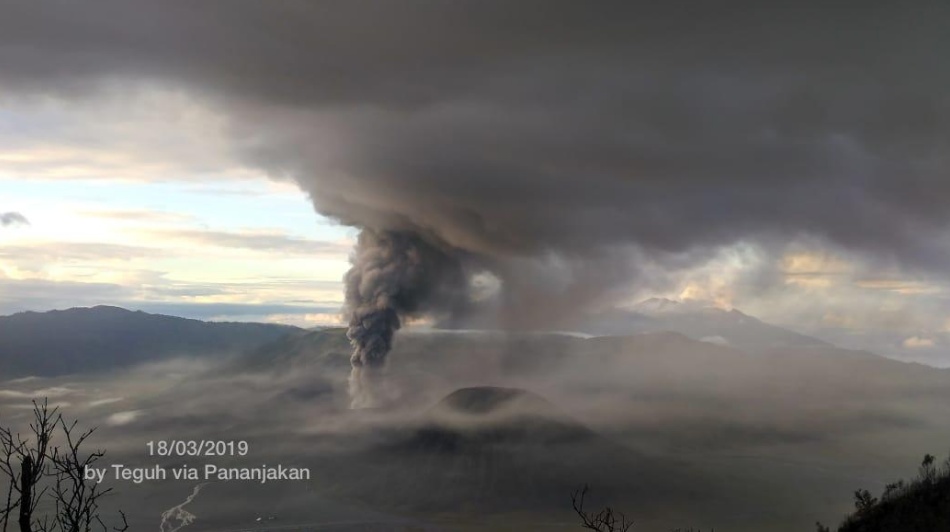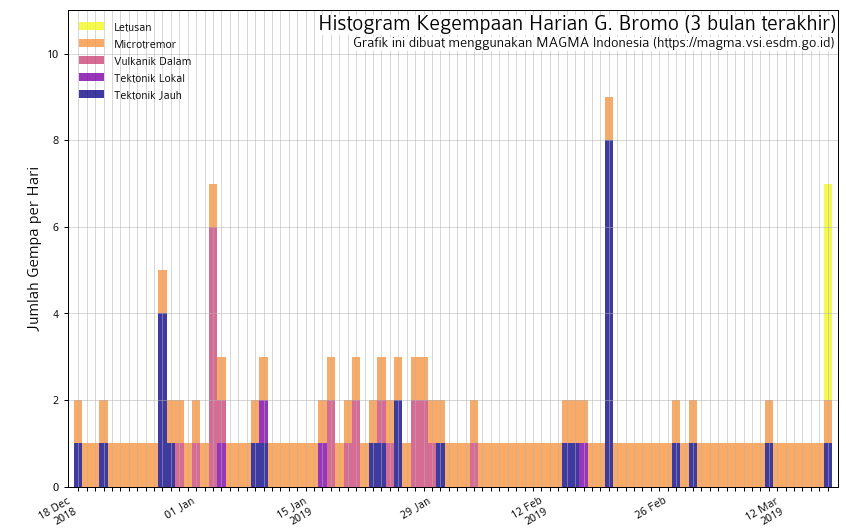Eruption continues at Bromo volcano, Malang airport remains in operation, Indonesia

The eruption at Mount Bromo continues at moderate levels on March 18, 2019. This eruptive phase started on February 18, 2019 after 29 months of relative quiet.
The Alert Level of the volcano remains at 2 of 5 since 2016. Visitors and tourists are prohibited from engaging in activity within 1 km (0.62 miles) from the summit crater.
"Tourism of the region remains safe and Malang airport remains in operation," said Sutopo Purwo Nugroho, spokesman for the country's disaster management agency.

Image credit: Sutopo Purwo Nugroho
Bromo erupted at 23:00 UTC on February 18 (06:00 local time, February 19), forcing authorities to raise the Aviation Color Code to Orange (previously unassigned).
The eruption produced a thick white and brown column of ash, rising up to 2 929 m (9 393 feet) above sea level and drifting WSW. This is about 600 m (1 968 feet) above the crater rim.
"According to the Bromo PVMBG, the mountain has been on Alert Level 2 [caution] since 2016 after its eruption in 2011. We are currently preparing to increase the alert level and security for Mt. Bromo visitors while coordinating with the central PVMBG," Bromo Tengger Semeru National Park (TNBTS) management head Jhon Kenedie said February 19.
Visitors are prohibited from entering a 1 km (0.62 miles) radius from the park's craters but Kenedie said they can still enjoy nearby hills and panoramas.

Geological summary
The 16-km-wide (9.9 miles) Tengger caldera is located at the northern end of a volcanic massif extending from Semeru volcano. The massive volcanic complex dates back to about 820 000 years ago and consists of five overlapping stratovolcanoes, each truncated by a caldera. Lava domes, pyroclastic cones, and a maar occupy the flanks of the massif.
The Ngadisari caldera at the NE end of the complex formed about 150 000 years ago and is now drained through the Sapikerep valley.
The most recent of the calderas is the 9 x 10 km (5.6 x 6.2 miles) wide Sandsea caldera at the SW end of the complex, which formed incrementally during the late Pleistocene and early Holocene. An overlapping cluster of post-caldera cones was constructed on the floor of the Sandsea caldera within the past several thousand years.
The youngest of these is Bromo, one of Java's most active and most frequently visited volcanoes. (GVP)
Featured image: Mount Bromo on March 18, 2019. Credit: Sutopo Purwo Nugroho

Commenting rules and guidelines
We value the thoughts and opinions of our readers and welcome healthy discussions on our website. In order to maintain a respectful and positive community, we ask that all commenters follow these rules.